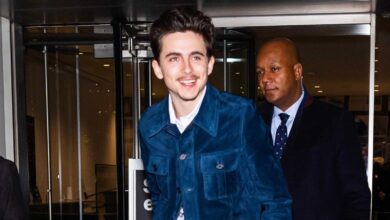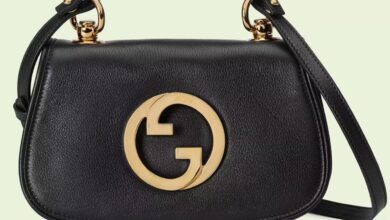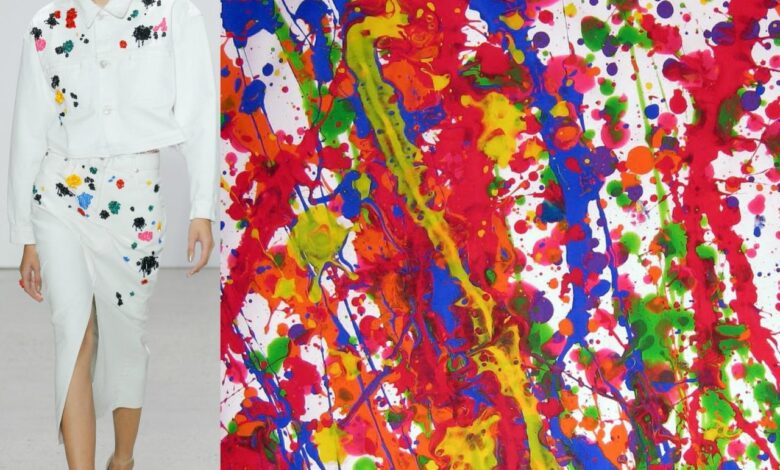
Art inspired fashion whats your pick – Art inspired fashion – what’s your pick? This exploration dives deep into the captivating world where artistic expression meets fashion design. From the historical influences of Renaissance art to the modern interpretations of contemporary artists, we’ll uncover how different art forms have shaped fashion trends over time. We’ll examine the materials, techniques, and cultural contexts that contribute to the unique aesthetic of art-inspired fashion, and discuss the role of sustainability and ethical considerations in this dynamic field.
Get ready to be inspired!
We’ll be looking at how art-inspired fashion reflects different cultural values and identities, and explore how it can be used to express individuality and creativity. This is a fascinating field that blends artistic vision with practical fashion, so get ready to discover some incredible examples and insights.
Defining Art-Inspired Fashion
Art-inspired fashion transcends mere trends; it’s a dynamic dialogue between artistic expression and wearable design. It’s a powerful medium that allows artists to communicate their visions through clothing, accessories, and overall aesthetic, while simultaneously inspiring fashion designers to push creative boundaries. This exploration dives into the essence of art-inspired fashion, highlighting its key characteristics and influences.Art-inspired fashion is distinguished by its deliberate incorporation of artistic elements into garment design.
Unlike fleeting trends, it often draws inspiration from a specific artist’s style, a particular art movement, or a unique piece of artwork. This direct connection with the artistic source lends a unique depth and originality to the garments, setting them apart from other fashion categories.
Key Characteristics of Art-Inspired Fashion
Art-inspired fashion is more than just incorporating an artistic motif; it reflects a deep engagement with the artistic process and its underlying principles. Key characteristics include:
- Visual Impact: Art-inspired designs often feature bold colors, striking patterns, and unconventional silhouettes, mirroring the visual intensity and complexity of the artwork that inspires them.
- Conceptual Depth: The designs frequently go beyond surface-level aesthetics, conveying deeper meanings and interpretations of the art form. For example, a collection inspired by surrealism might use dreamlike imagery and distorted forms to create a unique mood and narrative.
- Artist Collaboration: A common practice is direct collaboration between fashion designers and artists, allowing the artistic vision to be translated seamlessly into wearable garments. This approach often results in innovative and unique designs.
- Originality and Uniqueness: Unlike trends that are easily replicated, art-inspired fashion aims for originality. It strives to capture the essence of the artistic inspiration while creating a distinct and recognizable aesthetic.
Examples of Artistic Influences
Artists across various disciplines have significantly influenced fashion designs.
- Painting: Impressionist paintings, with their vibrant colors and fleeting moments, have inspired flowing silhouettes and color palettes in fashion. Similarly, the bold strokes and vibrant colors of Fauvism have led to bold, expressive clothing.
- Sculpture: Sculptural forms, particularly those with sharp angles and unconventional shapes, often translate into angular cuts, asymmetrical details, and unique constructions in fashion. The dynamic nature of modern sculpture is often translated into the movement and drape of garments.
- Photography: The mood and composition of photographic works often translate into fashion aesthetics. A collection inspired by street photography might feature urban-inspired patterns, raw textures, and realistic depictions of everyday life.
- Performance Art: The theatricality and conceptual nature of performance art often inspire avant-garde fashion designs, incorporating unconventional materials, exaggerated silhouettes, and innovative techniques. The body itself is often the canvas, with costumes and accessories reflecting the performance’s core message.
Comparison with Other Fashion Subgenres, Art inspired fashion whats your pick
The following table highlights the distinctions between art-inspired fashion and other prominent fashion subgenres.
| Art-Inspired Fashion | Minimalist Fashion | Boho Fashion | Streetwear Fashion |
|---|---|---|---|
| Draws inspiration from various art forms; strong visual impact, conceptual depth, and unique designs. | Emphasizes simplicity and clean lines; focus on neutral colors and basic silhouettes. | Characterized by flowing fabrics, eclectic patterns, and bohemian-inspired elements. | Typically incorporates urban aesthetics, street culture influences, and casual comfort. |
| Examples include collections inspired by specific paintings, sculptures, or photography. | Examples include tailored clothing with minimalist cuts, often featuring neutral tones. | Examples include flowing maxi dresses, layered jewelry, and embroidered garments. | Examples include graphic tees, hoodies, and sneakers, often reflecting urban styles. |
| Focuses on originality and translating artistic concepts into clothing. | Focuses on clean lines and timeless designs, often with a neutral color palette. | Focuses on comfort, freedom, and self-expression through unique patterns and materials. | Focuses on casual comfort, practicality, and reflecting urban culture. |
Historical Influences
Art and fashion have a long and intertwined history, constantly influencing and inspiring each other. From ancient civilizations adorning their bodies with symbolic patterns to modern designers drawing inspiration from abstract expressionism, the relationship between these two creative disciplines has been a dynamic one, evolving alongside societal shifts and artistic movements. This exploration will delve into the key historical periods where art profoundly impacted fashion, demonstrating the profound interplay between creative expression and cultural identity.The connection between art and fashion is not a mere superficial borrowing of aesthetics.
It reflects a deeper cultural conversation, where artists and designers use their work to communicate ideas, emotions, and even societal critiques. Understanding this relationship requires examining how different artistic movements shaped fashion trends, from the opulent grandeur of the Renaissance to the geometric precision of Art Deco.
Renaissance Art and Fashion
The Renaissance witnessed a revival of classical ideals and a renewed interest in humanism, impacting both art and fashion. Artists like Leonardo da Vinci and Michelangelo, with their focus on the human form and the exploration of perspective, directly influenced the fashion of the time. The flowing lines and elaborate embellishments of Renaissance clothing reflected the emphasis on beauty and human potential.
Sculptures and paintings showcasing the human body, particularly those depicting mythological figures or biblical scenes, often inspired the elaborate patterns and rich fabrics used in garments. For instance, the flowing, draped fabrics of Renaissance gowns, often adorned with intricate embroidery and goldwork, found their inspiration in the paintings of the era.
Art Deco and 1920s Fashion
The Art Deco movement, flourishing in the 1920s, embraced geometric patterns, bold colours, and streamlined forms. Artists like Tamara de Lempicka and Jean Cocteau captured the era’s dynamism and elegance in their works. Fashion mirrored this aesthetic with the iconic “flapper” dress, featuring a streamlined silhouette and a shorter hemline. The geometric patterns found in Art Deco artwork, such as those seen in the works of talented designers like Raymond Duchamp-Villon, directly influenced the designs of garments and accessories.
The emphasis on clean lines and vibrant colours, exemplified by the designs of the era, directly correlated with the spirit of Art Deco art.
Impressionism and Post-Impressionism in Fashion
Impressionist and Post-Impressionist art, with its focus on capturing light and atmosphere, had a significant impact on the way colour and texture were used in fashion. Artists like Monet and Van Gogh experimented with bold colours and unconventional brushstrokes, leading to a greater experimentation with colour palettes in fashion. This was reflected in the use of vibrant fabrics and prints, as well as the exploration of unconventional patterns and colour combinations in clothing.
Table of Influential Artists and Their Impact on Fashion
| Artist | Art Form | Fashion Influence | Time Period |
|---|---|---|---|
| Leonardo da Vinci | Painting, Sculpture | Human form, flowing lines, elaborate embellishments | Renaissance (1452-1519) |
| Tamara de Lempicka | Painting | Geometric patterns, bold colours, streamlined silhouettes | Art Deco (1920s-1930s) |
| Henri Matisse | Painting | Bold colours, vibrant prints, unconventional patterns | Early 20th Century |
| Pablo Picasso | Painting, Sculpture | Abstract shapes, geometric forms, unconventional silhouettes | Early 20th Century |
Modern Interpretations
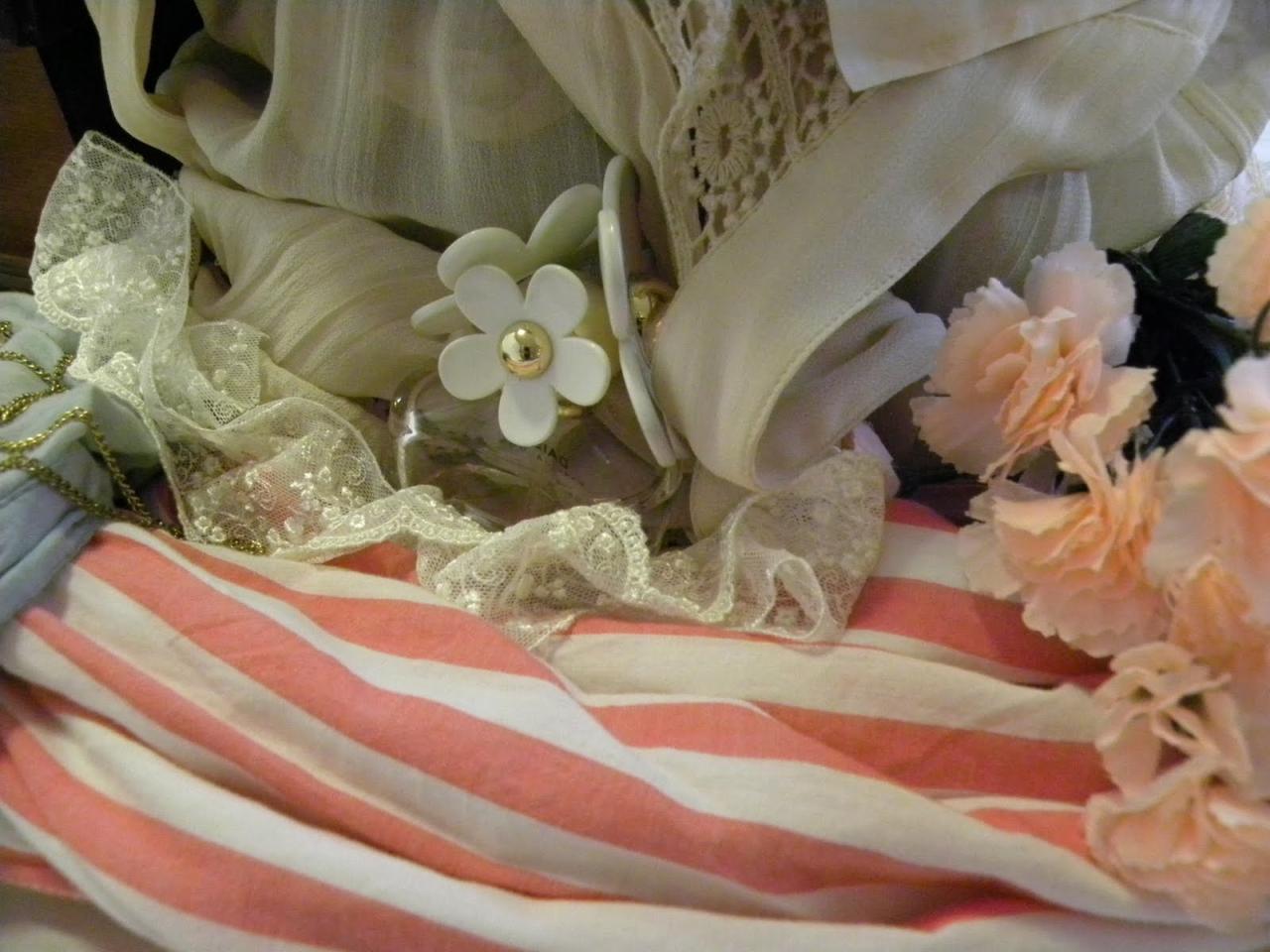
Art-inspired fashion is no longer a niche pursuit; it’s a vibrant reflection of contemporary creativity. Designers are actively seeking inspiration from a diverse range of artistic mediums, breathing new life into classic aesthetics and forging bold new pathways. This evolution is profoundly influenced by the accessibility of art through various platforms, making the relationship between art and fashion more dynamic than ever before.Contemporary art, with its exploration of unconventional materials, concepts, and narratives, directly impacts fashion’s aesthetic language.
This influence is visible in the use of unconventional textures, bold color palettes, and innovative silhouettes, often challenging traditional notions of beauty and style. The very act of creating a garment becomes an artistic expression, showcasing the designer’s understanding and interpretation of the art world.
Current Artists Inspiring Fashion Designers
Contemporary artists are frequently drawing inspiration from a variety of mediums, influencing design trends. The rise of digital art, street art, and conceptual art has introduced innovative aesthetics into fashion, creating an exciting synergy between artistic expression and wearable art. Artists like Yayoi Kusama, with her iconic polka dots and immersive installations, have undoubtedly influenced designers who incorporate bold patterns and immersive aesthetics into their collections.
Similarly, the abstract and conceptual works of artists like Agnes Martin and Sol LeWitt are evident in the geometric patterns and minimalist designs emerging in contemporary fashion. The exploration of new materials and techniques within the art world has been mirrored in fashion, creating a continuous dialogue between the two.
Art-inspired fashion—what’s your favourite take on it? I’ve been digging into the latest trends, and honestly, some pieces are truly stunning. For a deeper dive into the intersection of art and fashion, check out this podcast episode on Aimee Lou Wood and The White Lotus on the podcast Aimee Lou Wood the White Lotus. They discuss how the show’s aesthetic is influencing the current fashion scene.
Ultimately, my personal pick is anything with a bold graphic print or a strong colour palette—it’s just so exciting!
Contemporary Art Shaping Fashion
Contemporary art is shaping the current fashion landscape by providing a platform for experimentation and innovation. Designers are increasingly incorporating unconventional materials, textures, and techniques from art into their creations, blurring the lines between art and fashion. This fusion transcends mere aesthetic mimicry, creating pieces that convey complex narratives and interpretations of the artist’s vision. For instance, the use of recycled materials, often a prominent theme in contemporary art, is finding its way into sustainable fashion practices.
So, art-inspired fashion – what’s your favourite take on it? I’m seriously digging the bold, almost surreal pieces I saw at the recent “ultrabanale at leica galerie milano” exhibition. Ultrabanale at Leica Galerie Milano really pushed the boundaries of what’s possible, showcasing a fascinating blend of artistic vision and wearable design. Ultimately, though, what I’m most curious about is how this translates into everyday street style.
What are your thoughts?
Similarly, the deconstruction of traditional silhouettes and the exploration of unconventional forms are evident in fashion, reflecting a wider artistic tendency to question norms and explore alternative aesthetics.
Social Media and Popular Culture’s Role
Social media platforms play a crucial role in disseminating art-inspired fashion trends. Instagram, in particular, has become a vibrant hub for showcasing artistic creations, showcasing designer collections and artist collaborations. This platform fosters a dynamic exchange of ideas and inspires a sense of community among fashion enthusiasts. Likewise, popular culture influences fashion significantly. Film, music, and pop culture often feature artists and art-inspired designs, further promoting art-inspired fashion trends and creating a sense of shared cultural experience.
This integration of art and popular culture has resulted in the proliferation of art-inspired fashion and its recognition as a significant aesthetic trend.
Impact of Technology on Art-Inspired Fashion
Technology significantly impacts the creation and promotion of art-inspired fashion. 3D modeling and digital design tools enable designers to translate artistic concepts into tangible garments with greater precision and speed. Furthermore, online platforms facilitate the global dissemination of art-inspired fashion, connecting designers with a wider audience and enabling collaborative ventures. The fusion of technology and art has revolutionized the design process, creating more efficient and creative possibilities for fashion.
Table of Current Fashion Designers and Their Art Inspirations
| Designer | Art Inspiration | Collection Name | Year |
|---|---|---|---|
| Vivienne Westwood | Pop Art, Punk Rock | Punk | 1970s |
| Alexander McQueen | Surrealism, Gothic | Highland Rape | 1995 |
| Comme des Garçons | Minimalism, Conceptual Art | Hommage à l’art | 2000 |
| Raf Simons | Photography, Minimalism | Spring/Summer | 2023 |
Materials and Techniques
Art-inspired fashion transcends mere clothing; it’s a dialogue between artistic expression and wearable art. The materials and techniques employed are crucial in translating the essence of an artwork onto the human form. They dictate the garment’s texture, weight, and ultimately, its impact on the wearer. From the delicate brushstrokes of a painting to the bold lines of a sculpture, these elements play a pivotal role in bringing the art to life.
Diverse Materials
The range of materials used in art-inspired fashion is vast and exciting. Beyond traditional fabrics like silk and cotton, designers frequently incorporate unconventional materials to capture the spirit of a particular artistic movement or style. Leather, often used to represent strength and resilience, can be intricately sculpted to mirror sculptural forms. Recycled materials, like repurposed denim or upcycled fabrics, are increasingly prominent, highlighting sustainability and a focus on environmental consciousness.
The choice of material speaks volumes about the designer’s vision and the intended aesthetic. Embellishments like beads, sequins, and metallic threads further amplify the artistic statement, adding a touch of glamour and texture.
Transforming Art into Garments
Several techniques facilitate the translation of artistic concepts into wearable garments. Digital printing allows for intricate patterns and vibrant colors to be reproduced seamlessly on fabrics, replicating the details of paintings or photographs with precision. Hand-painting, a more time-consuming yet personalized technique, enables the artist to directly interpret the artistic vision onto the fabric, often capturing the unique character of a particular piece.
So, art-inspired fashion – what’s your favourite look? I’m totally digging the bold colours and dramatic silhouettes lately. To keep my skin looking its best for all those fabulous outfits, I’ve been using some top-notch best skin firming creams. Ultimately, though, it’s all about expressing yourself through fashion, whatever your personal style.
Embroidery, with its ability to create three-dimensional textures and patterns, adds another layer of detail and complexity. The choice of technique often dictates the level of detail, the final aesthetic, and the overall impact of the garment.
Influence of Materials and Techniques
The selection of materials and techniques significantly influences the final aesthetic of an art-inspired garment. A garment crafted from flowing silk with intricate hand-painted floral patterns evokes a sense of elegance and delicate beauty. Conversely, a garment made from stiff leather with bold digital prints might convey strength and a modern edge. The texture, weight, and color of the materials, combined with the technique used, ultimately dictate the overall impression of the garment.
These elements should be carefully considered in relation to the specific artwork being interpreted.
Comparison and Contrast
Different materials and techniques create distinct aesthetics. Hand-painted garments often possess a more unique and personalized touch, while digitally printed garments offer a more accessible way to reproduce complex designs. Embroidered garments emphasize detail and craftsmanship, while garments with metallic threads might evoke a sense of luxury. The specific choice of materials and techniques, therefore, becomes a crucial element in creating a harmonious relationship between the art and the garment.
Materials and Techniques Table
| Material | Technique | Example | Description |
|---|---|---|---|
| Silk | Hand-painting | A dress with hand-painted floral patterns | Evokes elegance and delicacy; the artist’s touch is prominent. |
| Leather | Digital printing | A jacket with digital prints of a cityscape | Conveys strength and a contemporary aesthetic; the digital print allows for detailed reproduction. |
| Repurposed denim | Embroidery | A skirt with embroidered portraits | Highlights sustainability and craftsmanship; embroidery adds depth and three-dimensionality. |
| Cotton | Digital printing | A t-shirt with a digital print of a famous painting | Provides a readily available canvas for reproduction; offers a cost-effective way to express art. |
Art-Inspired Fashion Trends
Art-inspired fashion is a dynamic and ever-evolving landscape, reflecting the creative energy of the artistic world. From reinterpreting classic masterpieces to embracing contemporary artistic movements, designers are constantly seeking to infuse their collections with visual narratives and symbolic meaning. This exploration delves into the current and emerging trends, highlighting their impact on the fashion industry.The intersection of art and fashion fosters a rich dialogue, pushing boundaries and creating a unique fusion of aesthetics.
It’s a testament to the power of art to inspire and influence not only artistic expression but also the way we dress and present ourselves. This influence transcends simple aesthetics, often embedding deeper meanings and social commentary within the designs.
Current Trends in Art-Inspired Fashion
Contemporary art styles, such as abstract expressionism and digital art, are prominently featured in modern fashion designs. This fusion is evident in the use of bold colours, unconventional patterns, and innovative textures. The emphasis on artistic freedom and experimentation translates into collections that celebrate individuality and self-expression. The trend also reflects a growing interest in sustainability and ethical production, with designers seeking to incorporate eco-friendly materials and responsible manufacturing practices into their art-inspired creations.
Examples of Art Styles in Fashion Houses
Several fashion houses are known for their consistent exploration of art-inspired themes. For instance, Dior frequently draws inspiration from the works of surrealist artists, translating dreamlike imagery and fantastical forms into haute couture garments. Similarly, Versace’s collections often incorporate vibrant colours and bold patterns evocative of Italian Renaissance art. These examples demonstrate how specific artistic movements are not just referenced but deeply integrated into the design process.
Role of Art Exhibitions and Cultural Events
Art exhibitions and cultural events serve as vital catalysts for shaping fashion trends. The exposure to diverse artistic expressions, from museum displays to gallery openings, provides designers with a constant stream of inspiration. These events expose a broader audience to innovative approaches in art and fashion, fostering a creative exchange that often translates into new designs and trends.
List of Art-Inspired Fashion Trends
- Abstract Expressionism: This style is characterized by bold colours, dynamic brushstrokes, and unconventional shapes. Garments might feature oversized abstract prints, asymmetrical cuts, and unique colour palettes, reflecting the spontaneity and energy of the artistic movement. Examples include flowing dresses with vibrant colour blocking or jackets with bold, abstract patterns.
- Surrealism: Surrealist fashion often incorporates dreamlike imagery, fantastical elements, and unexpected juxtapositions. Garments may feature fantastical creatures, distorted forms, or fragmented imagery. This trend is seen in garments with unusual shapes, layered fabrics, and surprising combinations of colours and textures, often mirroring the dreamlike quality of surrealist art.
- Digital Art: This trend is characterized by the use of digital technology to create unique and innovative patterns and designs. Garments might feature intricate pixelated prints, vibrant graphic elements, or 3D-rendered imagery. Examples include dresses with pixelated prints, jackets with 3D-rendered geometric patterns, and accessories with futuristic designs.
Art-Inspired Fashion and Sustainability: Art Inspired Fashion Whats Your Pick
Art-inspired fashion, with its vibrant creativity and unique aesthetic, often pushes boundaries and sparks conversations about design. However, the journey toward truly sustainable art-inspired fashion requires careful consideration of ethical implications and the incorporation of environmentally conscious practices. This exploration delves into the crucial intersection of artistic vision and responsible design, examining how artists and designers can create beautiful and meaningful garments without compromising the planet’s well-being.The pursuit of sustainable art-inspired fashion is not merely about reducing environmental impact; it’s about fostering a design ethos that respects both the creative process and the planet.
This requires a shift in mindset, encouraging designers to move beyond fleeting trends and embrace materials and processes that minimize harm to the environment and support ethical labor practices.
Ethical Considerations of Using Art as Inspiration
Art-inspired fashion can face ethical challenges when the inspiration comes from sources that exploit labor or damage the environment. Carefully evaluating the origins of artistic concepts, ensuring fair wages for artisans, and prioritizing sustainable materials are paramount to ethical design. The fashion industry’s history is replete with instances of exploitation, and art-inspired fashion must avoid repeating these mistakes.
Sustainable Practices in Art-Inspired Fashion Design
Sustainable practices are not merely an add-on but an integral part of the design process. Designers can employ various techniques to create truly sustainable art-inspired fashion.
- Using Recycled and Upcycled Materials: Repurposing discarded fabrics, transforming vintage garments, or incorporating reclaimed materials such as old textiles, leather scraps, or plastic bottles allows designers to create unique pieces with a lower environmental footprint. This reduces textile waste and creates a compelling narrative around the garment’s origin.
- Prioritizing Locally Sourced Materials: Choosing materials from local producers reduces transportation emissions and supports local economies. This approach not only reduces the environmental impact but also builds stronger community ties. For example, using locally grown organic cotton or repurposed fabrics from local craft communities are sustainable options.
- Employing Eco-Friendly Dyes and Finishes: Sustainable dyes derived from natural sources, such as plants and minerals, minimize water pollution and chemical waste compared to conventional synthetic dyes. This environmentally conscious approach ensures a cleaner production process.
Incorporating Sustainable Materials and Practices
Artists and designers can integrate sustainable materials and practices into their work in various ways.
- Using Organic and Bio-Based Fabrics: Choosing organic cotton, hemp, or other plant-based fibers reduces the environmental impact of fabric production compared to conventional synthetic materials. This approach minimizes the use of harmful pesticides and promotes biodiversity.
- Implementing Minimalist Design Principles: Embracing simplicity and functionality reduces the amount of material needed for each garment, lessening textile waste. This approach promotes durability and longevity, encouraging consumers to invest in pieces that will last.
- Partnering with Ethical Suppliers: Collaborating with ethical and sustainable suppliers ensures fair wages and safe working conditions for all involved in the production process. This commitment to ethical labor practices upholds social responsibility and contributes to a positive cycle of production.
The Role of Consumers in Promoting Ethical and Sustainable Fashion
Consumers play a crucial role in driving demand for ethical and sustainable fashion.
- Supporting Sustainable Brands: Consumers can actively choose to support brands committed to sustainable practices by prioritizing their products and services. This support creates a demand that encourages further innovation and adoption of sustainable practices.
- Educating Themselves About Ethical Sourcing: Understanding the origin of materials and the labor conditions involved in garment production empowers consumers to make informed choices. This awareness promotes ethical consumption and encourages transparency in the fashion industry.
- Prioritizing Durability and Longevity: Investing in well-made garments that are designed to last longer reduces the frequency of purchases and minimizes textile waste. This mindful consumption pattern fosters a more sustainable approach to fashion.
How Art-Inspired Fashion Can Be Sustainable and Environmentally Conscious
Art-inspired fashion can embody sustainability through innovative design choices.
- Designing for Durability: Art-inspired pieces can be designed with durability in mind, promoting longevity and reducing the need for frequent replacements. This ensures that the garment can be enjoyed for years to come.
- Using Sustainable Techniques: Artisanal techniques and hand-crafting methods can be employed to reduce waste and promote ethical labor practices. This can be achieved by using natural materials and reducing the environmental footprint of the production process.
- Promoting Transparency and Traceability: Clearly outlining the origins of materials and the production processes ensures consumers can make informed decisions. This transparency fosters trust and encourages responsible consumption patterns.
Art-Inspired Fashion and Culture
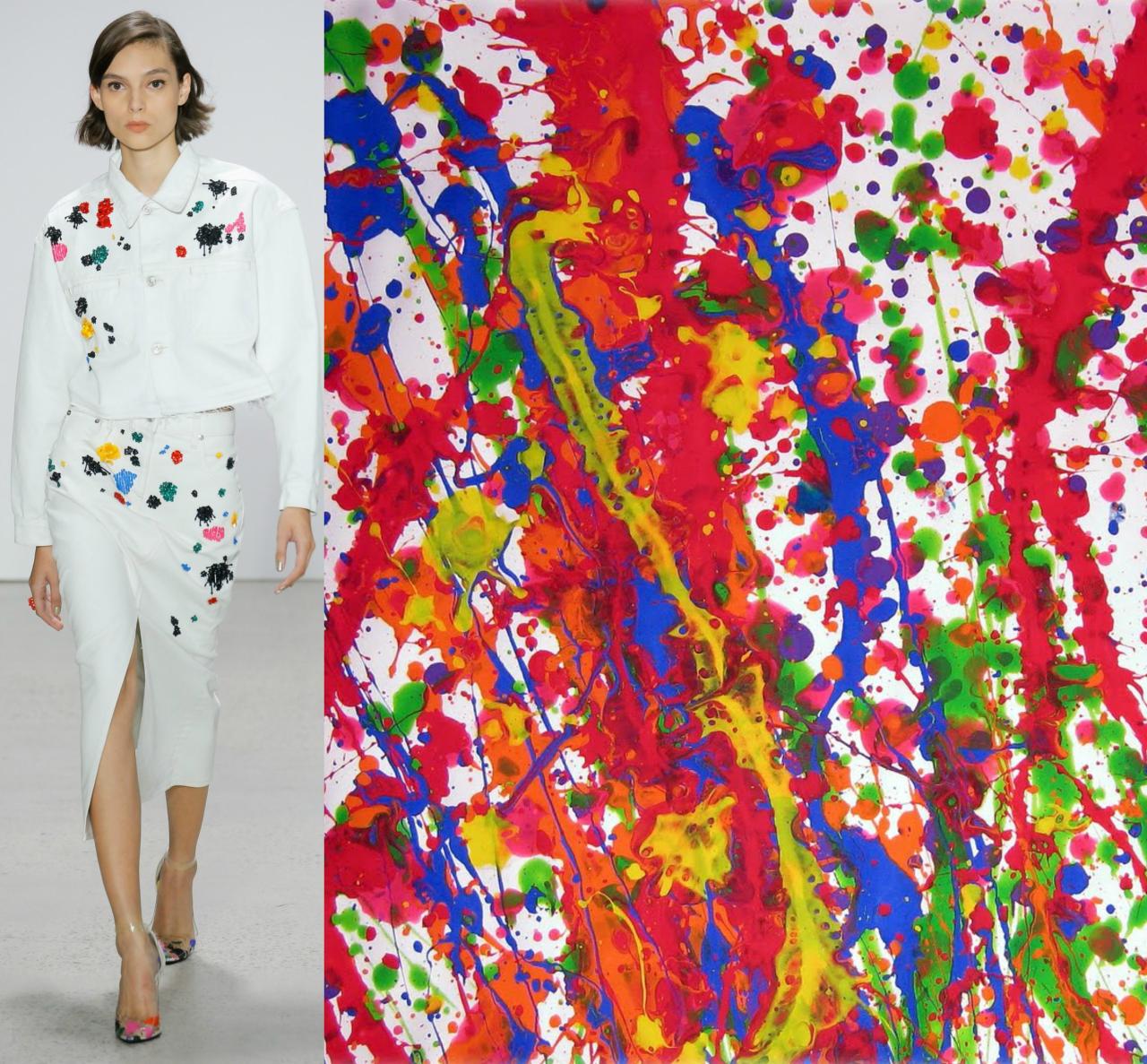
Art-inspired fashion is more than just a trend; it’s a powerful reflection of cultural values, identities, and evolving societal norms. It provides a unique lens through which to understand how different cultures interpret and express themselves through artistic mediums, translating those expressions into wearable art. This exploration delves into how art-inspired fashion acts as a dynamic dialogue between artistic creation and personal identity, and how it can challenge preconceived notions.Art-inspired fashion serves as a bridge between artistic expression and personal style.
It allows individuals to connect with the creative spirit of an artist, transforming abstract concepts into tangible forms of self-expression. This connection can lead to unique and personalized styles that defy traditional fashion norms and highlight the individual’s unique perspective.
Reflection of Cultural Values and Identity
Art-inspired fashion often embodies the core values and historical narratives of a culture. Traditional motifs, symbolic imagery, and artistic styles become embedded in clothing, carrying cultural significance and historical context. This connection to heritage allows individuals to connect with their roots and express their cultural identity. For example, traditional Japanese kimono designs, deeply rooted in the country’s artistic heritage, continue to inspire modern interpretations of the garments, showcasing a continuous cultural dialogue.
Expression of Individuality and Creativity
Fashion, in general, offers a platform for self-expression. Art-inspired fashion amplifies this, allowing individuals to personalize their garments, transforming them into unique statements of their artistic preferences. This approach fosters creativity and individuality, encouraging people to break free from conventional style expectations and craft their personal artistic narratives through clothing. A modern artist might incorporate abstract patterns or sculptural elements into their clothing, reflecting their personal artistic vision and unique style.
Challenging Social Norms and Expectations
Art-inspired fashion can be a powerful tool for challenging social norms and expectations. By incorporating unconventional designs, materials, or symbolic imagery, artists and designers can spark dialogue and inspire reflection on social issues. For instance, fashion choices that incorporate political or social commentary through artistic expression can become a potent tool for challenging conventional norms.
Perception of Art-Inspired Fashion Across Cultures
The interpretation of art-inspired fashion varies significantly across different cultures. Factors such as cultural sensitivities, historical context, and artistic traditions influence how a design is perceived and understood. In some cultures, intricate embroidery might be seen as a sign of respect and craftsmanship, while in others, it could be perceived as ostentatious or overly decorative.
Cultural Expressions Through Art-Inspired Fashion
| Culture | Artistic Style | Fashion Interpretation | Impact |
|---|---|---|---|
| Japan | Traditional kimono patterns, contemporary interpretations of origami | Kimonos, modern streetwear with origami-inspired details | Preservation and evolution of cultural heritage, showcasing contemporary artistic trends. |
| Africa | Bold colours, intricate beadwork, African print patterns | Dresses, tops, accessories incorporating vibrant colours and patterns | Expression of cultural pride, heritage, and artistry; often showcased on a global platform. |
| South America | Indigenous designs, vibrant colours, geometric patterns | Clothing incorporating native textiles and patterns | Celebration of indigenous art and craftsmanship, promoting cultural understanding. |
| Europe | Renaissance paintings, contemporary street art | Clothing incorporating elements of Renaissance art, street art-inspired designs | Integration of artistic history and contemporary expressions; reflecting a global artistic dialogue. |
Closure
In conclusion, art-inspired fashion is a dynamic and ever-evolving field, reflecting the interplay between artistic vision and fashion design. From historical influences to modern interpretations, the journey through this captivating world reveals a rich tapestry of creativity and cultural expression. Ultimately, art-inspired fashion serves as a powerful testament to the enduring connection between art and culture, encouraging self-expression and challenging societal norms.
What are your thoughts? Let’s discuss your favorite examples in the comments below!



